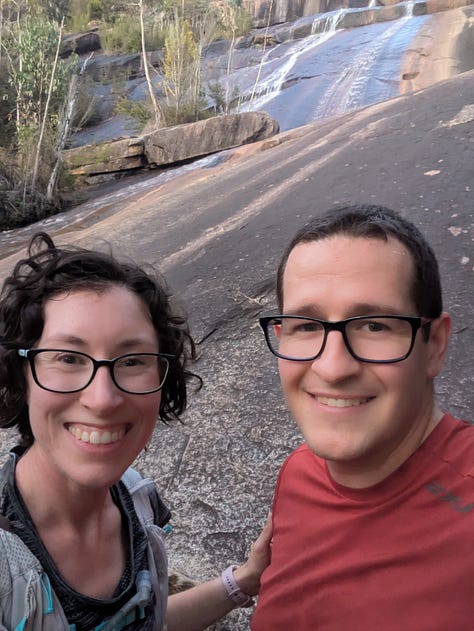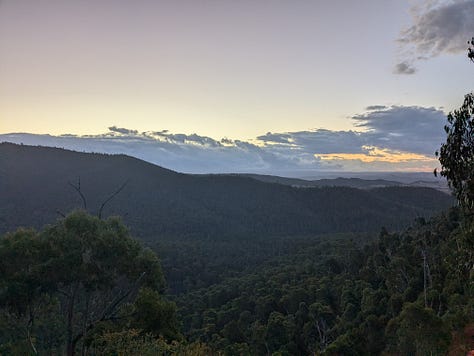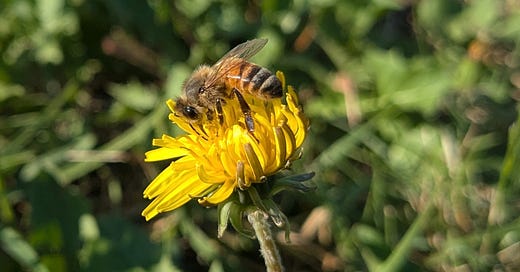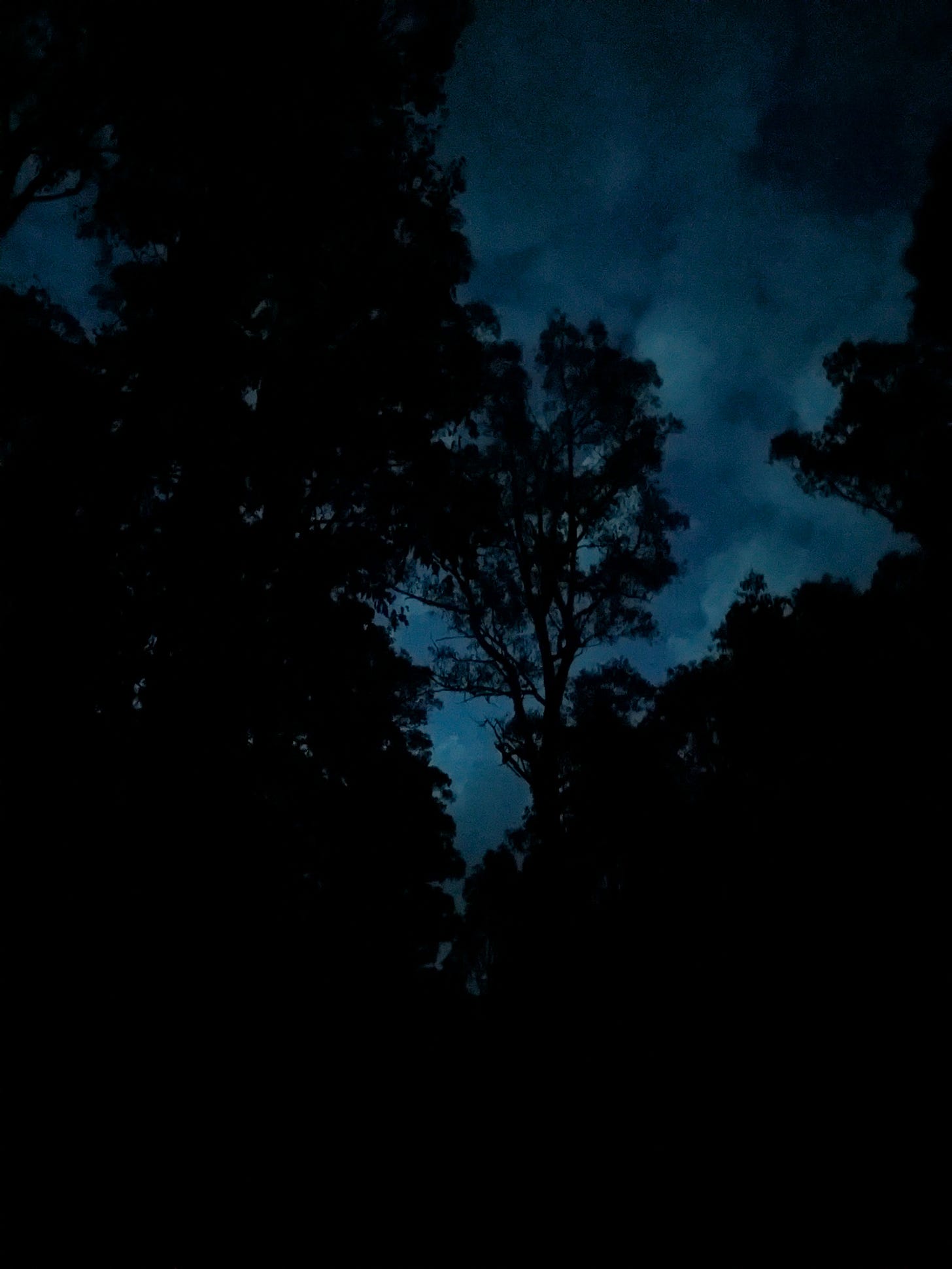Welcome to the third ever edition of The Nature Enthusiast!
This week I am enthusiastically reviewing the Wilhelmina Falls walk in Murrrindindi Scenic Reserve (in the northern part of Toolangi State Forest, about 90 minutes north-east of Melbourne), and teaching you more about European honey bees!
The route
Overview: A steep and rocky 10.8 km loop up Wilhelmina Falls, with 417m of elevation gain (max grade of 52%, so yeah, steep). (Find the route on Strava here). For reference, Strava thinks I should be able to manage the route in 1 hour 16 mins, and it took us 2 hours 20 mins (although we did an extra 800 m by going the wrong way). Allow more time than you think you’ll need.
Where to go: We started at the SEC campground carpark which probably has the easiest parking, but the Blackwood camp has flushing toilets. Take your pick. From either starting point, you’ll want to cross the Murrindindi river and join the Murrindindi river walking track. Head south until you hit the Wilhelmina Falls track (well-signed, you can’t miss it). Enjoy the last little bit of flat, easy track before heading up, and up, and up. You’ve got about 1.5 km of mountain ahead of you, with an average grade of 15% (if my maths is maths-ing right). The good news is that you’ll see the base of the falls just before the steepest pitch, and it’s gorgeous, so you’ll probably stop for long enough to catch your breath.
It’s then a short steep climb to a lookout with stunning views over the surrounding forest. And then another short steep climb to the viewing area at the top of the falls (a complete let down after the beauty of the previous two viewing areas, in my opinion). Be aware that this section is steep, rocky, and narrow. There are sections with a hand rail and other sections with metal stairways (which had us questioning how on earth they carted in the equipment), but plenty of sections with only big rocks.
The track then flattens out and widens, and before long hits the Boroondara track. Turn left, and enjoy the flat easy terrain (it won’t last long). In just under a kilometer, you’ll hit Jacksons road. Turn left. Be mindful that this is an actual road (4WD road, but still, there may be cars). The next 900 m is all uphill, but at a relatively easy grade of just 7%. You’ll then start the long, fairly chill descent back to the car park. Stay on Jacksons road until you see a sign. From this direction, the sign is blank, but take another few steps and you’ll see the sign is for Mill track. Unless you want to add a lot of extra distance to your walk/run (like we did, because we did not see the sign), go down Mill track.
From here, the path narrows back down to walking track size, but it’s still easy to follow, with very few obstacles over the path. Stay on Mill track until it morphs into the Murrindindi river walking track, and you will eventually find your starting point again.



Trail conditions: The trail is all well-signed and easy to follow. It ranges from wide walking tracks (you can mostly travel hand in hand with a special someone), to steep mountain clambers, to stairs and viewing platforms, to wide roads, to narrow walking tracks. While there are tricky sections, the track is well-maintained with few trees down over the trails.
Wildlife: I know there were animals out there. We heard plenty. However, the only thing I can confidently identify was the fox which gave me the fright of my life after we heard something rustling in the bushes. Because, as you will soon see, it was dark.
Other considerations: Be smarter than us. Don’t start this course in the 30 minutes before sunset. We were running to try to at least make it to the viewing area before it got too dark. As a result we didn’t have the leisure of taking in the views along the way.
Also, if you are going to be foolish like us and tackle this route in the dark, don’t drop and break your head torch. Completing this route in the dark with only a phone’s torch light between us was not ideal. It also meant that the only photo I was able to get to document anything after the top of the falls was this:
European Honey Bee (Apis mellifera)
Overview: When you think of a bee, this is probably the bee that you’re thinking of.
What to look for: Fuzzy abdomen and head, big eyes, and a long striped yellow and black thorax (if you look closely, you’ll notice that they all have slightly different stripes!). About the size of the end segment of your pinkie finger.
Where to look: Find some flowers and you’re practically guaranteed to find a few of these guys buzzing around. It just needs to be warm enough (at least 12C).
Fun facts: The stinger at the end is actually a modified ovipositor (the tube a queen bee uses for egg laying)! This means that only female bees are capable of stinging. They alos have pollen baskets called corbicula on their back legs, which might look loaded up with tiny yellow balls.
Why they are cool: While European honey bees are an introduced species to Australia, they are super important! Without them, we wouldn’t have almonds, apples, avocados, blueberries, pears, sunflowers, cucumbers, pumpkins, cantaloupe, broccoli, Brussels sprouts, cabbage, carrot, cauliflower, celery, mustard, or onion! And the yield of many other crops would be greatly reduced. An easy thing you can do to look after bees (both native and introduced) is to avoid spraying pesticides on your garden, leave a small dish of water out with a couple of rocks in it for bees and other insects to drink out of, and plant lots of flowers in your garden!
Nature journal prompt: Go out into your backyard, watch a flower, and sketch whatever insect comes to visit!
That’s it for this month! Subscribe so you don’t miss next month’s trail review, and leave a comment telling me about your recent trail explorations or adventures with honey bees!






